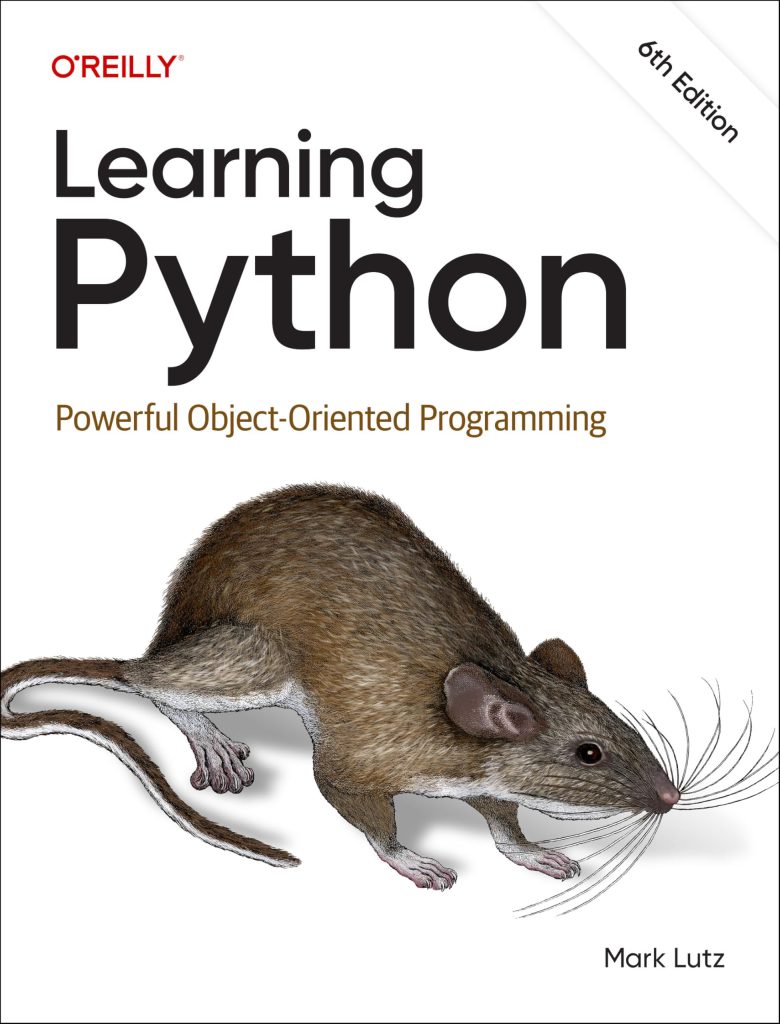
JSON, or JavaScript Object Notation, has emerged as a ubiquitous format for data interchange within the scope of web development. Its lightweight structure, characterized by a simple syntax, has made it the go-to choice for APIs and configuration files alike. However, as with any technology, JSON is not without its vulnerabilities, especially when it comes to parsing and handling data securely.
At its core, JSON is designed to be easily readable by humans and machines. This dual nature, while beneficial, also opens doors to various forms of attacks. One of the most prominent threats arises from the way JSON parsers handle input. Malicious actors can craft JSON payloads that exploit these parsers, leading to a range of security issues, including injection attacks and data leaks.
Consider the case of a JSON string that incorporates executable code or commands. If a parser indiscriminately evaluates such strings without proper validation, it can inadvertently execute harmful instructions. That is akin to a magician performing a trick, where the audience, entranced by the illusion, fails to perceive the underlying danger.
Furthermore, JSON’s flexibility allows for the inclusion of various data types, such as strings, numbers, arrays, and objects. This inherent complexity can lead to unexpected behaviors if not handled with care. For instance, a JSON array could be manipulated to contain an excessive number of elements, potentially causing a denial-of-service attack through resource exhaustion.
In the grand tapestry of software development, safeguarding against these vulnerabilities requires a vigilant approach. Developers must be acutely aware of the potential pitfalls that come with parsing JSON data. Vigilance is key, as the line between functionality and security can often be perilously thin.
To illustrate, let us take a look at a simple yet powerful Python example that highlights the importance of secure parsing:
import json
def safe_json_loads(json_string):
try:
return json.loads(json_string)
except json.JSONDecodeError as e:
print(f"Invalid JSON: {e}")
json_data = '{"name": "John", "age": 30}'
result = safe_json_loads(json_data)
print(result)
In this snippet, we see the implementation of a function that attempts to load a JSON string safely. By wrapping the parsing operation in a try-except block, we can catch potential errors and respond appropriately. This simple step is an important defense against malformed input.
The very nature of JSON, while advantageous for data interchange, also lays the groundwork for a multitude of security challenges. Understanding these vulnerabilities is the first step towards crafting robust and secure applications that can gracefully handle the complexities of JSON data.
The Role of json.scanstring in JSON Parsing
In the intricate dance of JSON parsing, the function json.scanstring emerges as a key player, wielding a delicate balance between utility and security. This function is designed to parse JSON strings, extracting the values while ensuring that the underlying structure remains intact. Its role is akin to a skilled watchmaker, meticulously assembling the gears and springs that allow a timepiece to function smoothly, all the while safeguarding against the chaos that might ensue if the pieces were mishandled.
When JSON strings are parsed, they often conceal a myriad of potential pitfalls. The json.scanstring function operates by traversing the string, identifying escape sequences such as quotes, backslashes, and control characters, which can easily derail a naive parser. This careful scrutiny is essential, for it is through these escape sequences that malicious content can be introduced into what appears to be a benign JSON payload. Just as a discerning reader might spot subtext in an otherwise innocuous text, json.scanstring must identify and decode these hidden complexities, allowing for a more secure parsing experience.
The significance of json.scanstring becomes even more pronounced when one considers the implications of injecting malformed or malicious data. A poorly designed parser might simply concatenate strings or execute commands without proper validation, leading to catastrophic consequences. In contrast, json.scanstring acts as a gatekeeper, ensuring that only well-formed strings emerge from the parsing process, thus fortifying the defenses of the application.
To elucidate the functionality of json.scanstring, let us think an example that demonstrates its inner workings:
import json
# A simple demonstration of json.scanstring
json_string = '"Hello, \"world!\""'
parsed_string = json.scanner.py_scanstring(json_string, idx=0)
print(parsed_string) # Output: ('Hello, "world!"', 14)
In this example, we see json.scanstring deftly handling an escape sequence within the string. It extracts the actual content while preserving the intent of the original data. The return value provides both the parsed string and the next index, indicating where the parsing left off, akin to a bookmark in a well-loved tome.
Yet, the role of json.scanstring transcends mere functionality; it embodies a philosophy of cautious parsing. By mandating strict adherence to the rules of JSON syntax, it instills a sense of discipline within the parsing process. This discipline very important, especially as the boundaries between data and code blur in the digital landscape.
In this light, json.scanstring is not just a tool; it is a sentinel guarding against the vagaries of human error and malicious intent. Its presence in the JSON parsing pipeline reminds developers that security is not merely an afterthought, but rather an integral aspect of software design. By using the power of json.scanstring, we can navigate the treacherous waters of JSON parsing with confidence, ensuring that our applications remain resilient against the ever-evolving threats that lurk in the shadows.
Implementing json.scanstring for Secure Parsing
def implement_secure_json_parsing(json_string):
# Using json.scanstring for secure parsing
try:
# Extracting the string using json.scanstring
parsed_string, _ = json.scanner.py_scanstring(json_string, idx=0)
return parsed_string
except Exception as e:
print(f"Error parsing JSON string: {e}")
# Example JSON string with escape sequences
json_data = '"Secure \"JSON\" parsing is essential!"'
result = implement_secure_json_parsing(json_data)
print(result) # Output: Secure "JSON" parsing is essential!
The implementation of json.scanstring for secure parsing is not merely a technicality; it represents a fundamental shift in how we approach the integrity of data processing. By using this function, developers can effectively mitigate the risks associated with JSON parsing, transforming potential vulnerabilities into secured pathways for data interchange.
Consider the elegance of the code snippet above. It illustrates how json.scanstring meticulously extracts the string content while preserving the integrity of escape sequences. This careful extraction process is vital in safeguarding against malformed input that could otherwise lead to undefined behavior or security breaches. Just as a skilled conductor guides an orchestra, ensuring each instrument plays its part harmoniously, json.scanstring ensures that each character and escape sequence in the JSON string is handled with precision.
As we delve deeper into the practical aspects of implementing json.scanstring, it becomes clear that the emphasis is not solely on functionality but also on the philosophy of defensive programming. The practice of anticipating potential pitfalls and addressing them proactively is a hallmark of robust software design. By integrating json.scanstring into our JSON parsing routines, we embrace this philosophy, setting a standard for how we handle data.
Moreover, the implementation of json.scanstring reinforces the importance of a layered security approach. It serves as a first line of defense, ensuring that only well-formed strings are permitted to traverse the parsing pipeline. However, that’s not a standalone solution; it should be complemented by additional layers of validation and sanitization. Just as a fortress is built with multiple defensive layers, so too must our applications be fortified against the myriad threats posed by malicious data.
In the spirit of continuous improvement, it’s essential to remember that secure parsing is an iterative process. The landscape of threats evolves, and so too must our strategies for combating them. By employing json.scanstring not only as a parsing tool but as a cornerstone of our JSON handling practices, we foster an environment where security is woven into the very fabric of our applications.
Thus, the act of implementing json.scanstring transcends the mere mechanics of code; it embodies a commitment to the principles of security and resilience in software development. Each invocation of this function is a step towards a more secure future, where the intricacies of JSON parsing are navigated with both grace and vigilance.
Common Security Issues in JSON Handling
As we traverse the labyrinth of JSON handling, it becomes evident that the landscape is fraught with common security issues that developers must diligently navigate. The very flexibility that makes JSON so appealing also introduces vulnerabilities that, if left unaddressed, can lead to dire consequences. One of the most insidious threats is the potential for injection attacks, where a malicious actor crafts JSON data to exploit parser behaviors. That’s reminiscent of a cunning trickster slipping a false coin into a well-meaning merchant’s purse, leading to confusion and loss.
Ponder, for instance, the scenario where user input is directly incorporated into a JSON structure without adequate validation. Such indiscriminate handling can pave the way for various forms of injection attacks, including SQL injections or script injections. When a JSON parser naively processes this data, it may inadvertently execute harmful commands embedded within, akin to a Trojan horse concealing a nefarious payload within an innocuous exterior. Ensuring that input is rigorously sanitized before parsing is akin to inspecting every parcel for hidden dangers.
In addition to injection vulnerabilities, the issue of data integrity looms large. JSON’s permissive nature allows for the inclusion of various data types, leading to potential type coercion vulnerabilities. A well-crafted malicious JSON payload could manipulate numeric values or alter the expected data types, causing applications to behave unpredictably. This could manifest as logic errors, crashes, or even unauthorized access to sensitive data. To guard against such outcomes, developers must enforce strict data type checks, ensuring that every piece of data adheres to the expected format.
Moreover, the threat of denial-of-service (DoS) attacks cannot be overlooked. A JSON parser, when faced with an excessively large payload or deeply nested structures, may consume disproportionate amounts of resources, bringing an application to its knees. This scenario is reminiscent of a congested highway, where a single accident can cause a ripple effect, slowing down traffic for miles. To mitigate this risk, it’s essential to impose sensible limits on the size and complexity of JSON data, rejecting any requests that exceed predefined thresholds.
Let us not forget about the importance of error handling during the parsing process. A failure to gracefully handle errors can lead to security leaks, where sensitive information is inadvertently disclosed in error messages. Such leaks can provide a treasure trove of information to an attacker, enabling them to craft more effective exploits. Therefore, it especially important to implement robust error handling mechanisms that log errors appropriately while safeguarding sensitive data from exposure.
Within the scope of JSON handling, awareness of these common security issues is paramount. Developers must adopt a mindset of vigilance, constantly questioning the integrity and safety of the data they process. By fostering a culture of security-first thinking, we can transform our approach to JSON parsing from one of carelessness to one of calculated caution.
To illustrate the need for vigilance, consider the following Python code snippet that demonstrates a simple validation routine before processing JSON data:
import json
def validate_json(json_string):
try:
# Attempt to parse the JSON
json_object = json.loads(json_string)
# Basic validation of expected structure
if not isinstance(json_object, dict):
raise ValueError("Expected a JSON object.")
return json_object
except (json.JSONDecodeError, ValueError) as e:
print(f"Validation error: {e}")
# Example JSON string
json_data = '{"name": "Alice", "age": 25}'
validated_data = validate_json(json_data)
print(validated_data) # Output: {'name': 'Alice', 'age': 25}
In this example, we see the importance of validation as a safeguard before parsing. By ensuring that the input adheres to the expected structure, we preemptively address potential threats, fostering a more resilient application. The act of validating JSON input is not just a technical necessity; it’s a philosophical commitment to maintaining the integrity and security of our systems.
As we delve deeper into the complexities of JSON handling, it becomes clear that the threats we face are constantly evolving. However, by remaining vigilant and proactive, we can navigate this intricate web of challenges, transforming potential vulnerabilities into opportunities for fortified security. Through mindful coding practices, we can ensure that our applications are not merely functional but also resilient against the myriad threats that lurk in the shadows of the digital landscape.
Best Practices for Secure JSON Processing
In the pursuit of secure JSON processing, best practices serve as guiding principles, illuminating the path developers should tread to safeguard their applications against the myriad threats inherent in data handling. These practices are akin to a well-worn map that reveals both treacherous terrains and safe havens, enabling a thoughtful approach to the complexities of JSON parsing.
One of the foremost tenets of secure JSON processing is the principle of input validation. It’s imperative to scrutinize every piece of data that enters the system, much like a vigilant gatekeeper who examines each visitor for concealed weapons. By enforcing strict schemas and validation rules, developers can ensure that only well-formed and expected data is processed. Using libraries such as jsonschema allows for the definition of clear and concise JSON schemas that can validate incoming data structures before they are parsed.
import jsonschema
from jsonschema import validate
# Define a schema for validation
schema = {
"type": "object",
"properties": {
"name": {"type": "string"},
"age": {"type": "integer"}
},
"required": ["name", "age"]
}
def validate_json_data(data):
try:
validate(instance=data, schema=schema)
except jsonschema.exceptions.ValidationError as e:
print(f"Validation error: {e}")
# Example JSON data
json_data = {"name": "Alice", "age": 25}
validate_json_data(json_data) # No output means validation passed
Moreover, the importance of sanitization cannot be overstated. Any data derived from user input must be treated with skepticism. Sanitizing input involves cleansing it of any potentially harmful characters or patterns that could lead to injection attacks. This practice is reminiscent of purifying water before consumption; it ensures that only the cleanest and safest data enters the system. Regular expressions or dedicated sanitization libraries can be employed to strip away unwanted characters, rendering the data safe for processing.
import re
def sanitize_input(input_string):
# Remove any potentially harmful characters
return re.sub(r'[^ws-]', '', input_string)
# Example user input
user_input = 'Alicealert("hacked");'
sanitized_input = sanitize_input(user_input)
print(sanitized_input) # Output: Alicealert("hacked");
Limiting the size and complexity of JSON payloads is another crucial best practice. Setting thresholds for acceptable data sizes helps prevent denial-of-service attacks that exploit resource exhaustion. By imposing limits on the depth of nested structures and the total size of JSON objects, developers can ensure that their applications remain responsive and resilient.
Error handling also deserves special attention in the sphere of secure JSON processing. It’s essential to implement robust mechanisms that not only capture and log errors but also ensure that sensitive information is not disclosed in the process. Imagine a magician revealing the secrets behind their tricks; such exposure can lead to vulnerabilities. Therefore, careful consideration of error messages and their contents is paramount—errors should be generic enough to prevent leakage of sensitive information but detailed enough to facilitate debugging.
def safe_json_loads(json_string):
try:
return json.loads(json_string)
except json.JSONDecodeError:
print("Invalid JSON format. Please check your input.")
except Exception as e:
print(f"Unexpected error: {e}")
# Example invalid JSON
invalid_json = '{"name": "Alice", "age": }'
safe_json_loads(invalid_json) # Output: Invalid JSON format. Please check your input.
Finally, fostering a culture of security awareness within development teams is essential. Developers must be educated on the evolving landscape of threats and the best practices for mitigating them. Regular code reviews, security audits, and staying updated on the latest security vulnerabilities and patches can significantly enhance the security posture of applications handling JSON data.
By weaving these best practices into the fabric of JSON processing, developers can transform their applications into bastions of security. The journey towards secure JSON handling is not a destination but an ongoing endeavor, one that requires constant vigilance, adaptation, and a commitment to excellence. Each line of code crafted with care is a step towards fortifying our digital realms against the ever-present threats that loom in the shadows.






